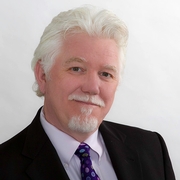School Report: Why Peer Support Is Better Than Watching Your Own Back
By John Henry Ledwith | March 9, 2016
Senior Sales Manager, ETR
I am a lucky man. I get to work with school health educators all over this fine country. That means I get to see some of the most inspired, inventive, dedicated work being done anywhere in the world. It’s work that has the potential to make a huge difference in the lives of kids and across communities.
Almost every day, I engage with people looking at how we can build communities that offer support to guide adolescents toward healthy choices. I often think about the force of peer groups as a social determinant of health. I’m fascinated by the power of peers to influence one another’s health, safety and future. Like most of my colleagues, I’m always asking how health educators can most effectively shape positive peer group values and norms.
And, like most of my colleagues, I also have concerns about the ways peer norms and values sometimes have negative effects.
The (Mostly) Positive Influence of Sports
I’ve raised two sons, and I’ve done a lot of coaching with youth in my local neighborhood. I’m one of those people who believes that we can influence positive aspects of peer norms through sports and physical activity. The chance to play competitively across the county and around the state creates new bonds and some great experiences for kids.
For my children and their friends, the majority of these experiences and new friendships have been positive. However, I’m reminded of a few situations where peer norms and values went in a negative direction—one that increased kids’ exposure to risky behaviors.
What Went Wrong
In some instances, these kids made connections with families who happened to have members involved in the local drug trade. As the young athletes moved from childhood to adolescence, they naturally looked up to the older brothers and cousins of their teammates. As they got older, some of them did a few favors. Maybe they made a few unspecified deliveries (“Hey, can you drop this package off at a friend’s house on your way home? It’s right on your way.”). Ultimately, some of these kids were identified by local law enforcement and rival gangs as associates of drug-involved groups.
These once-thriving kids made some poor choices that had big consequences. Usually, a point came when someone asked them to do more than they were willing to do. That’s when they found it can be difficult to step away. That group wanted them to continue.
Some were lucky and able to break free. Some were not.
What Made the Difference
What created the “luck” that helped the youth who got out? Supportive parents. Teachers who encouraged them in their academic goals and believed in their potential. Friends who weren’t involved in drugs, who stayed connected and were happy to call them one of their own. Programs, practices and community that built new levels of value, expression and self-esteem.
All of these factors help create a culture of opportunity that allows kids to care about their own well-being and believe in their own positive future.
I recently spent time with one of the young men who made it. He had all of these supportive factors around him. He put in a lot of personal effort. He graduated high school, left town to pursue a different dream, and now shows a lot of promise for a future career that really interests him. But to this day, he needs to watch his back when he returns to his hometown.
This brings me back to what excites me so much about health education, and, frankly, about ETR’s HealthSmart program. Over a decade ago, my friend Bill Kane, one of the developers of HealthSmart, would talk to me non-stop (really non-stop) about positive norms—among peers, family and community. He emphasized what an important factor they were in the health education program his team was building. “If we can shape peer group values,” he’d tell me, “we can move young people toward health. With the right type of health classes, we can give kids the kinds of connections that keep their choices on a healthy path.”
These were exactly the supports that helped my young friend. They’re a big part of why he’s alive today.
The Visionaries
Bill Kane wasn’t just a great guy and an endlessly creative, productive educator. He and co-developer Susan Telljohann were visionaries. They made sure that these principles and values were built into every HealthSmart lesson. It’s one of the reasons I love the program so much.
My call to action is that it’s time we use health education and other school and community-based resources to build foundations that allow kids to both make good choices and recover from their mistakes—quickly, before they go a step too far.
What’s working in your own schools and communities? Tell me your story! I’d love to hear from you.
John Henry Ledwith is ETR’s Senior Sales Manager. He can be reached at jhl@etr.org. You can also find him on LinkedIn and follow him on Twitter @JohnHenry56.





